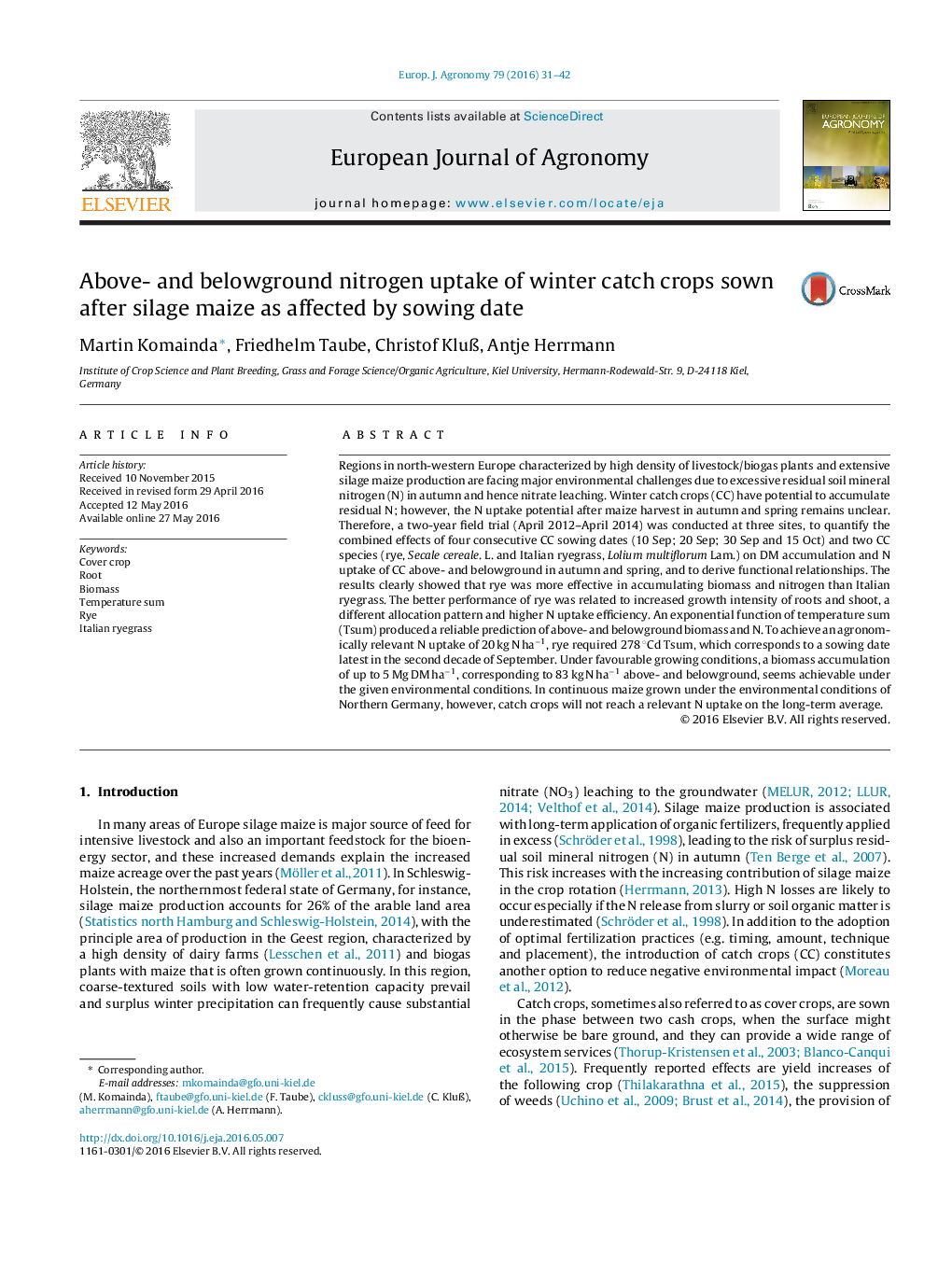| کد مقاله | کد نشریه | سال انتشار | مقاله انگلیسی | نسخه تمام متن |
|---|---|---|---|---|
| 6374224 | 1624446 | 2016 | 12 صفحه PDF | دانلود رایگان |
- Rye outperformed Italian ryegrass in terms of root and shoot biomass and N accumulation.
- At given root length density rye was characterized by higher N uptake efficiency.
- Biomass and N accumulation quantified by exponential functions of temperature sum.
- Catch crop sowing latest in second decade of September required for relevant N uptake.
Regions in north-western Europe characterized by high density of livestock/biogas plants and extensive silage maize production are facing major environmental challenges due to excessive residual soil mineral nitrogen (N) in autumn and hence nitrate leaching. Winter catch crops (CC) have potential to accumulate residual N; however, the N uptake potential after maize harvest in autumn and spring remains unclear. Therefore, a two-year field trial (April 2012-April 2014) was conducted at three sites, to quantify the combined effects of four consecutive CC sowing dates (10 Sep; 20 Sep; 30 Sep and 15 Oct) and two CC species (rye, Secale cereale. L. and Italian ryegrass, Lolium multiflorum Lam.) on DM accumulation and N uptake of CC above- and belowground in autumn and spring, and to derive functional relationships. The results clearly showed that rye was more effective in accumulating biomass and nitrogen than Italian ryegrass. The better performance of rye was related to increased growth intensity of roots and shoot, a different allocation pattern and higher N uptake efficiency. An exponential function of temperature sum (Tsum) produced a reliable prediction of above- and belowground biomass and N. To achieve an agronomically relevant N uptake of 20 kg N haâ1, rye required 278 °Cd Tsum, which corresponds to a sowing date latest in the second decade of September. Under favourable growing conditions, a biomass accumulation of up to 5 Mg DM haâ1, corresponding to 83 kg N haâ1 above- and belowground, seems achievable under the given environmental conditions. In continuous maize grown under the environmental conditions of Northern Germany, however, catch crops will not reach a relevant N uptake on the long-term average.
Journal: European Journal of Agronomy - Volume 79, September 2016, Pages 31-42
